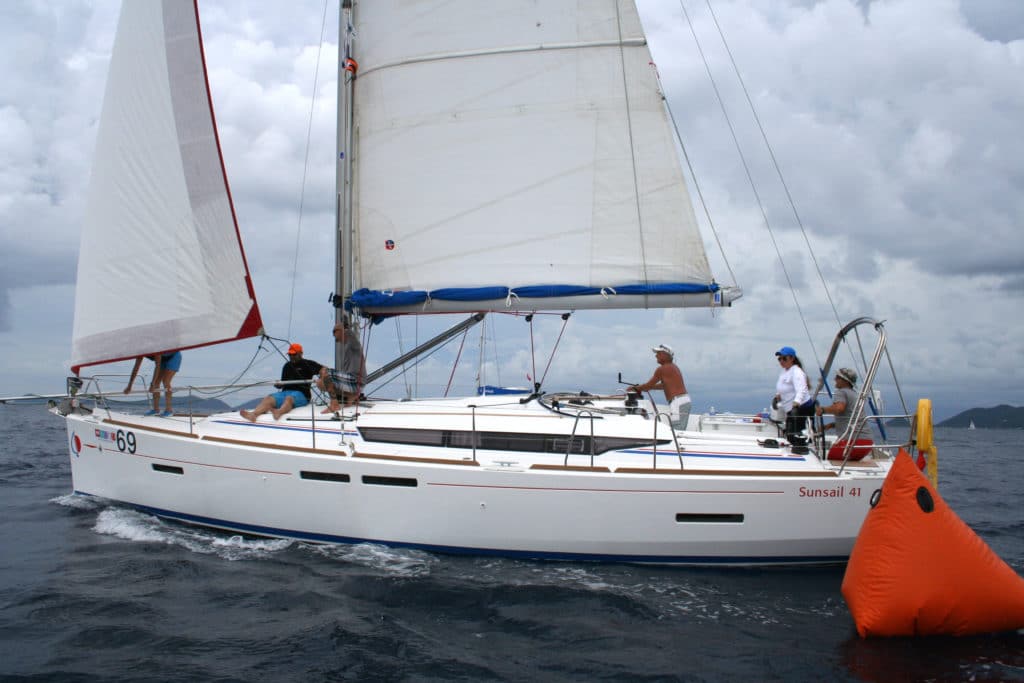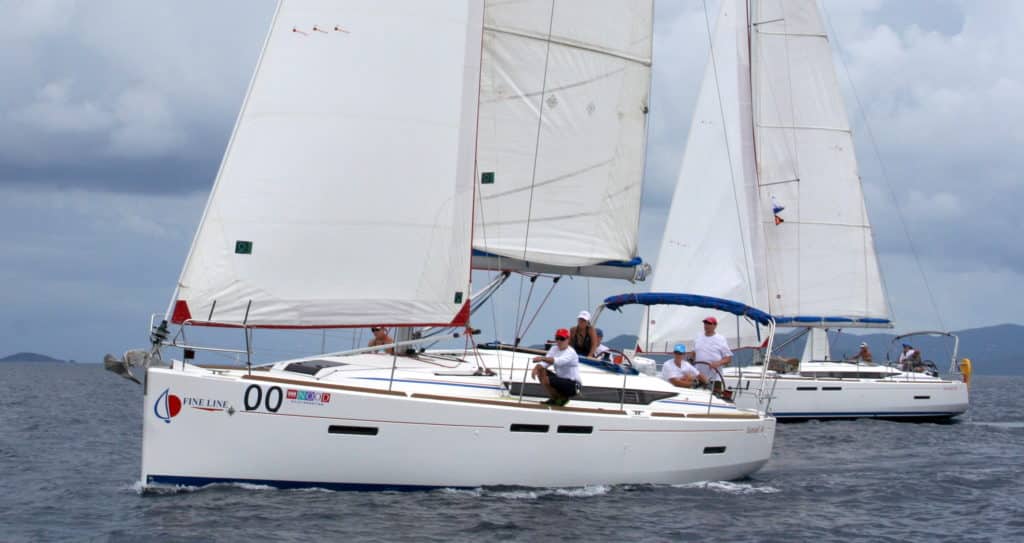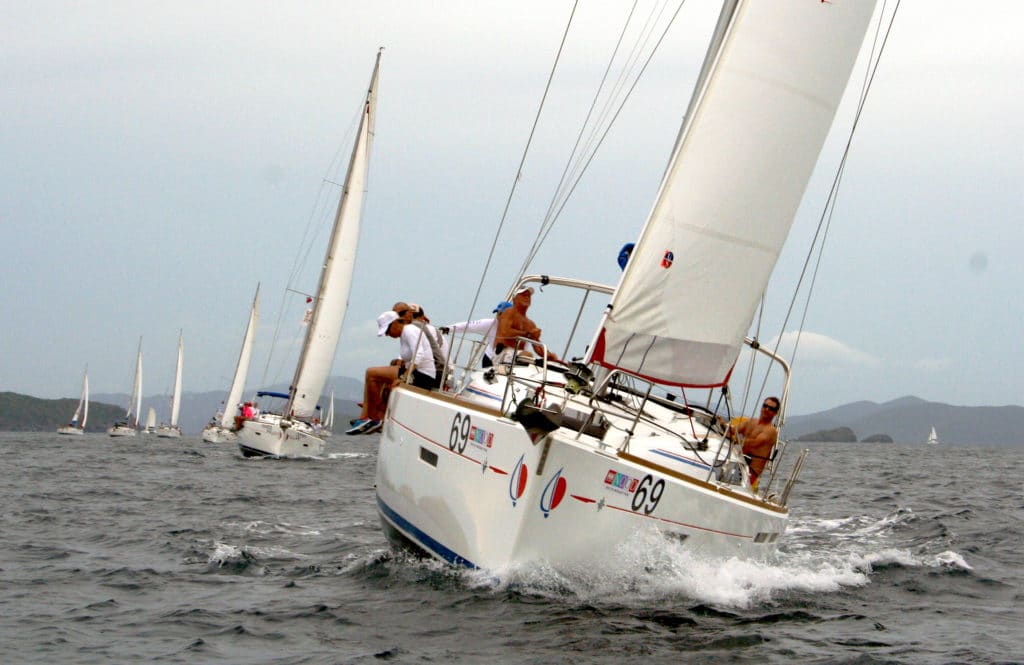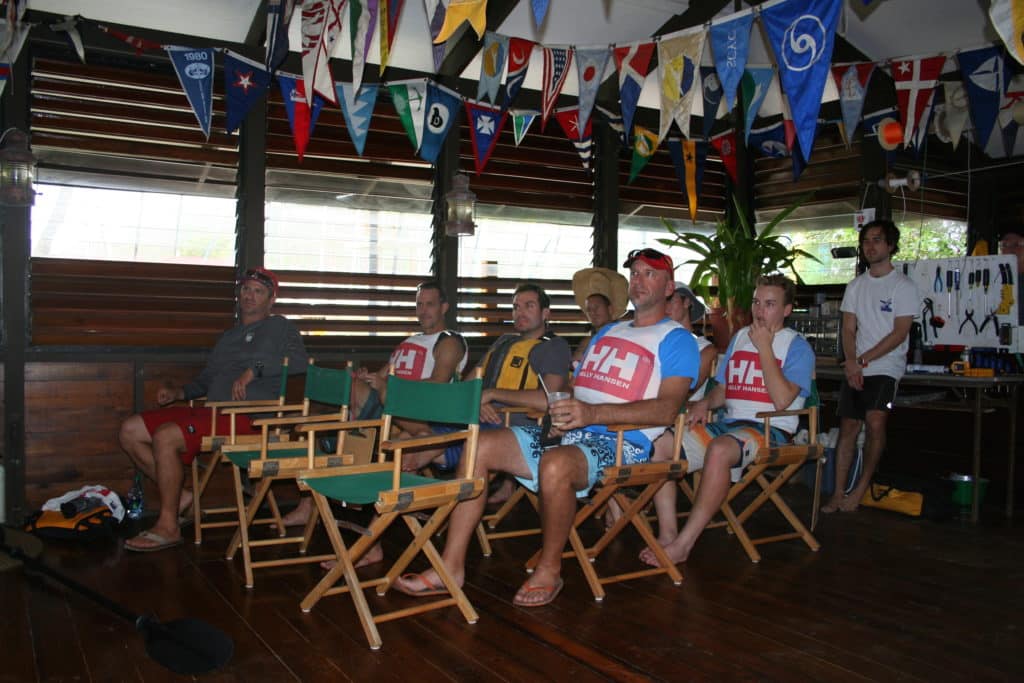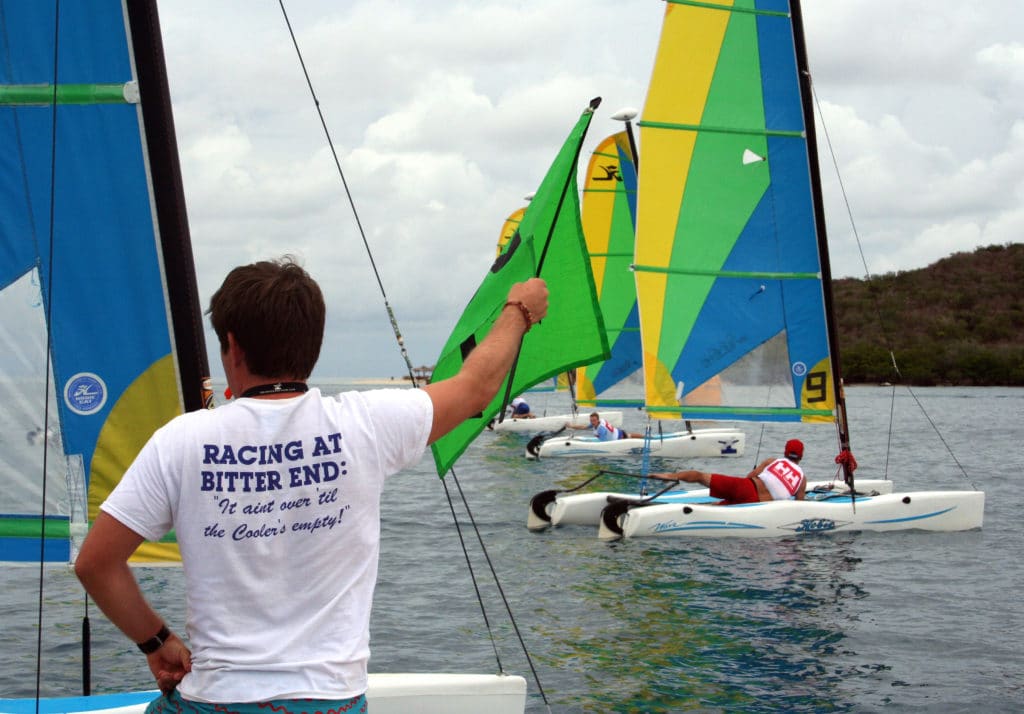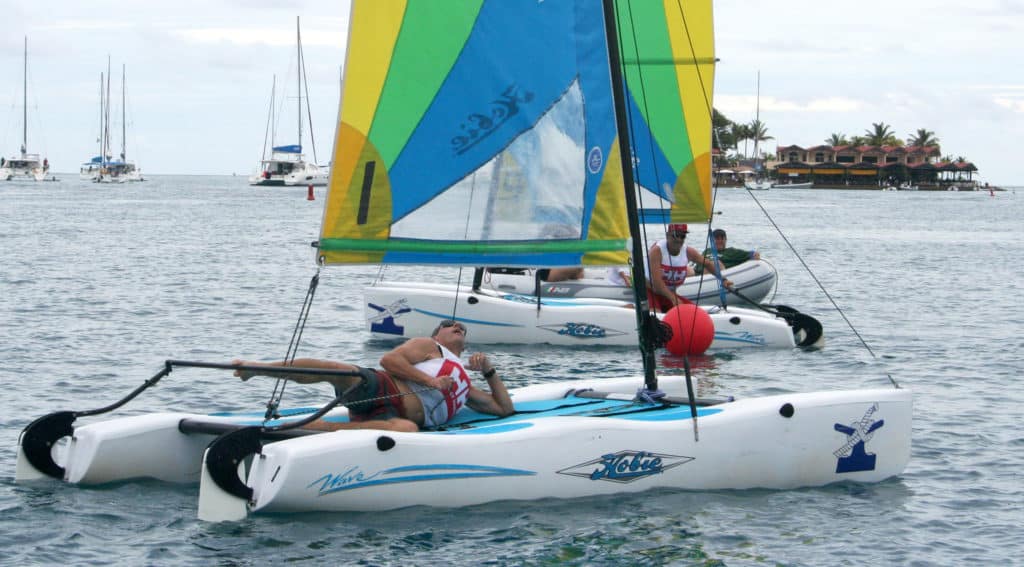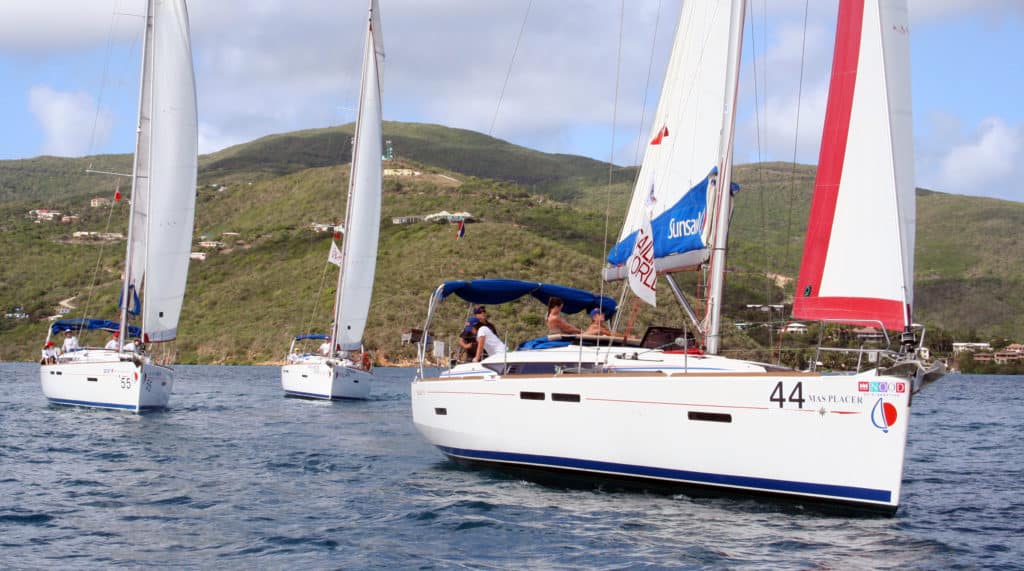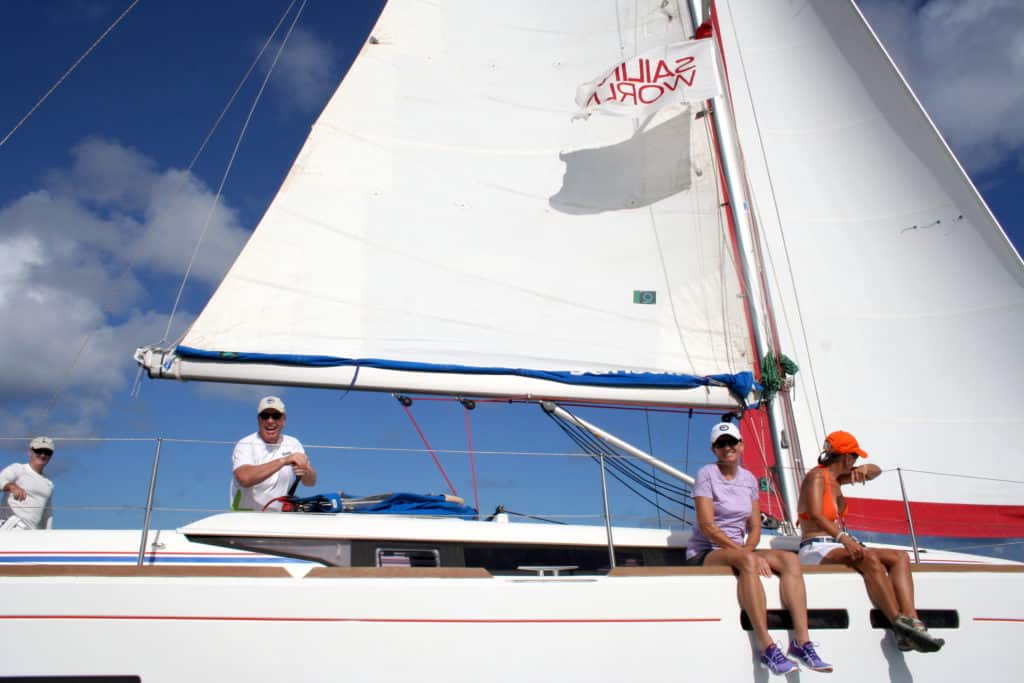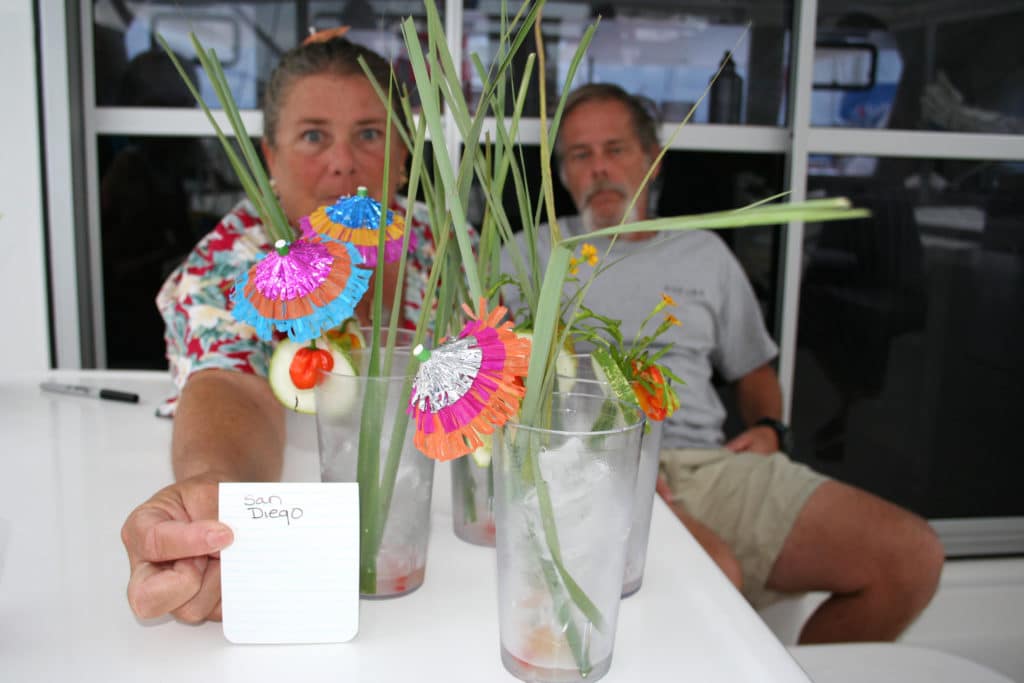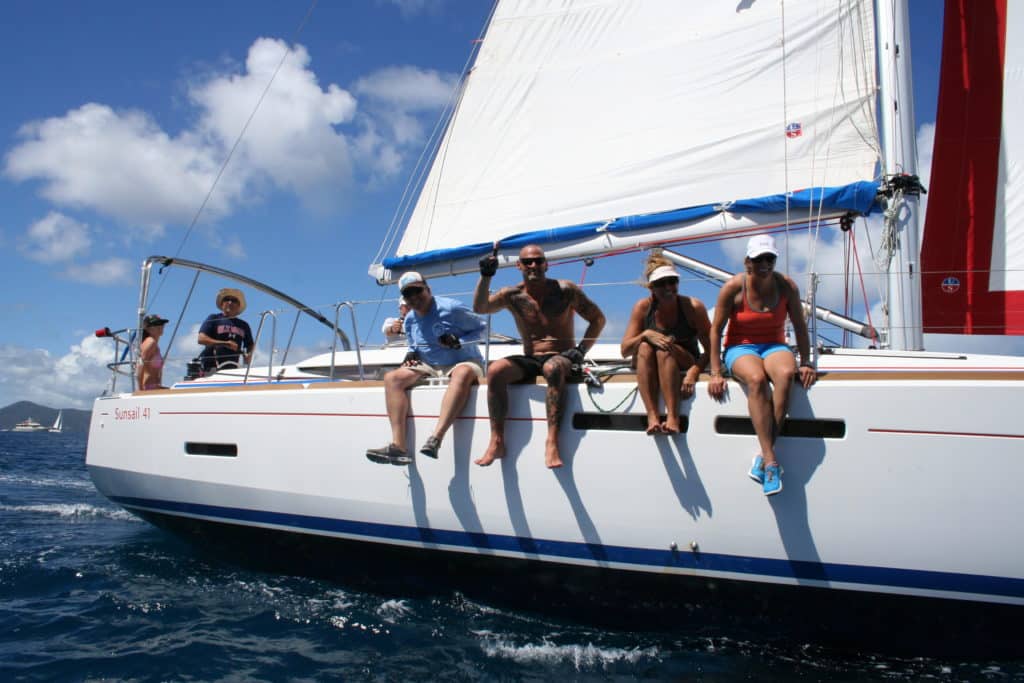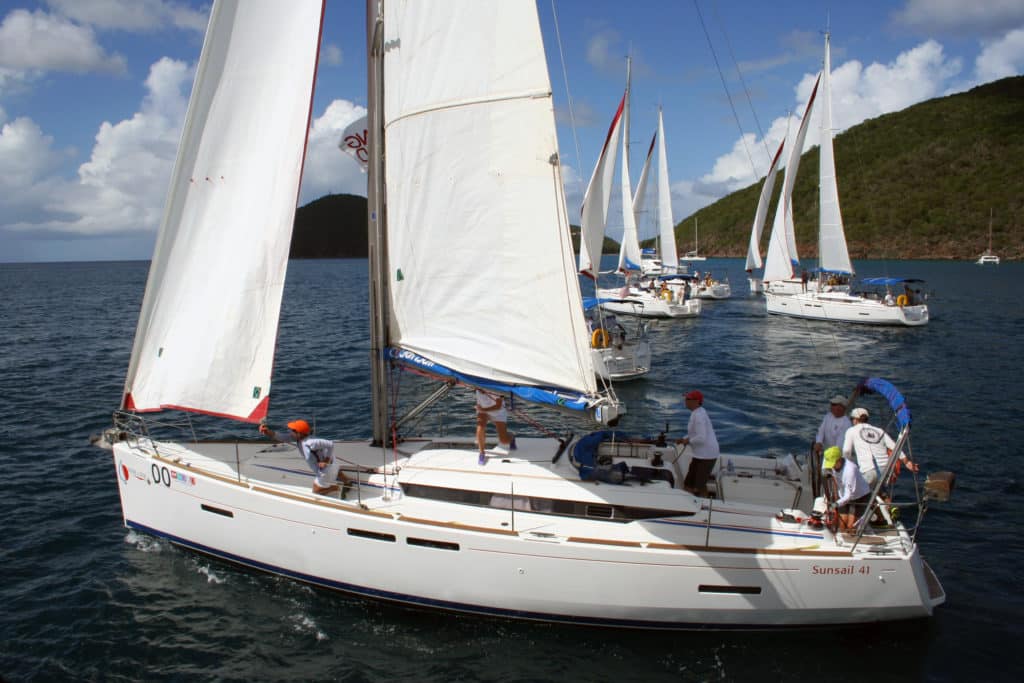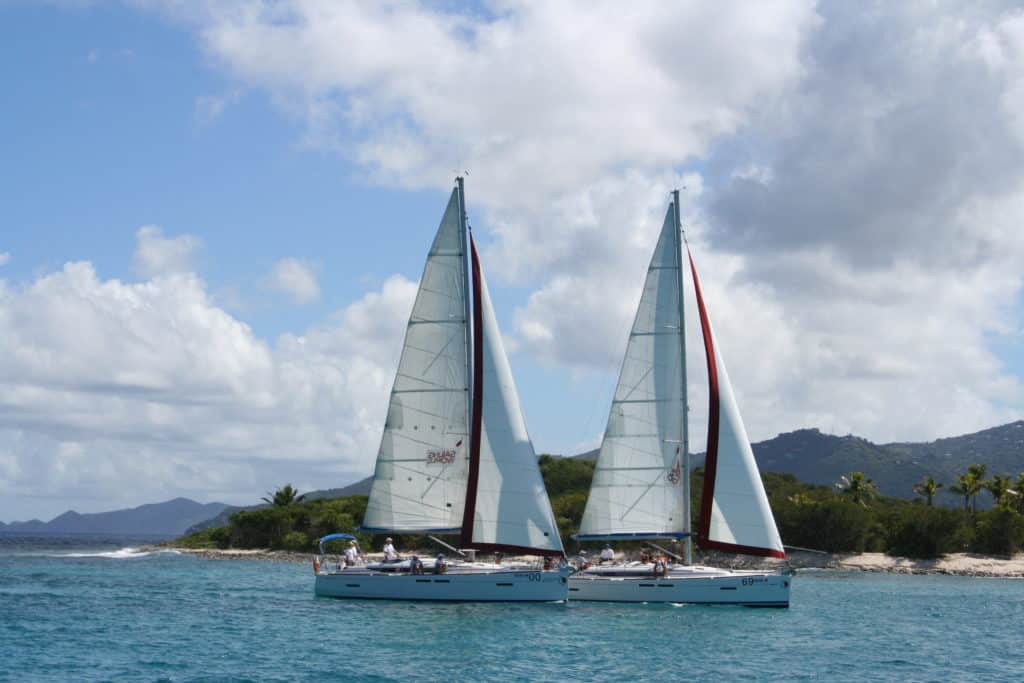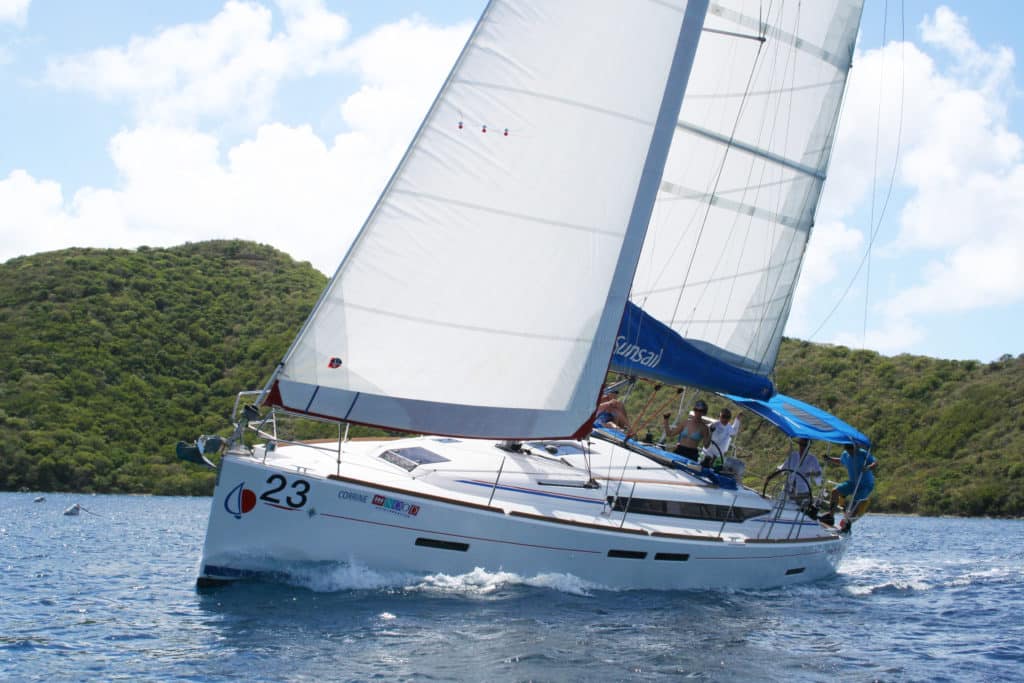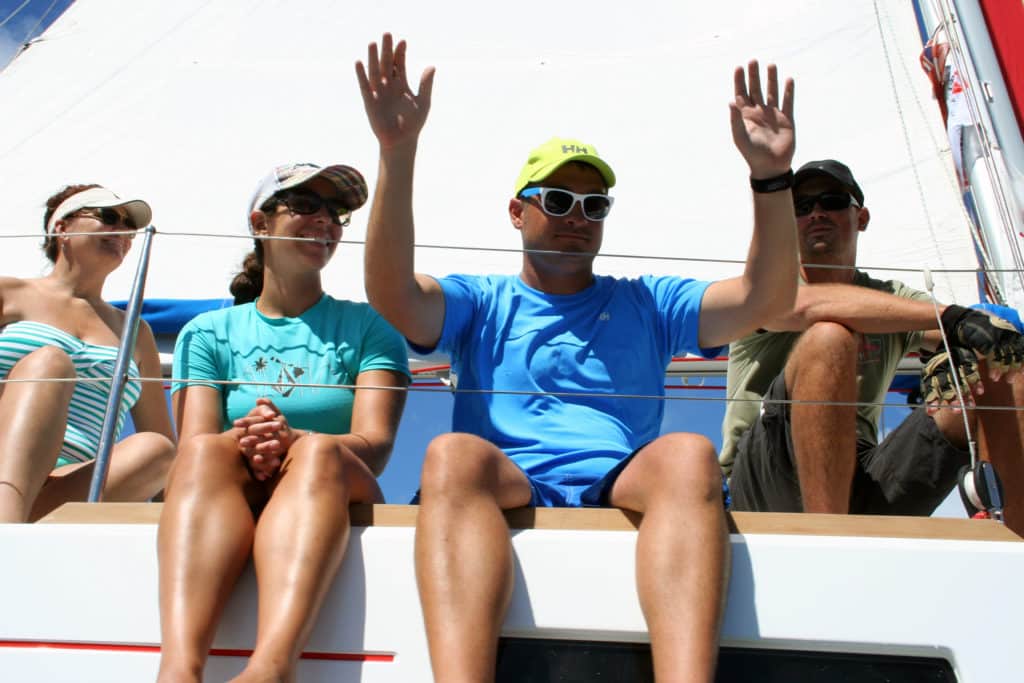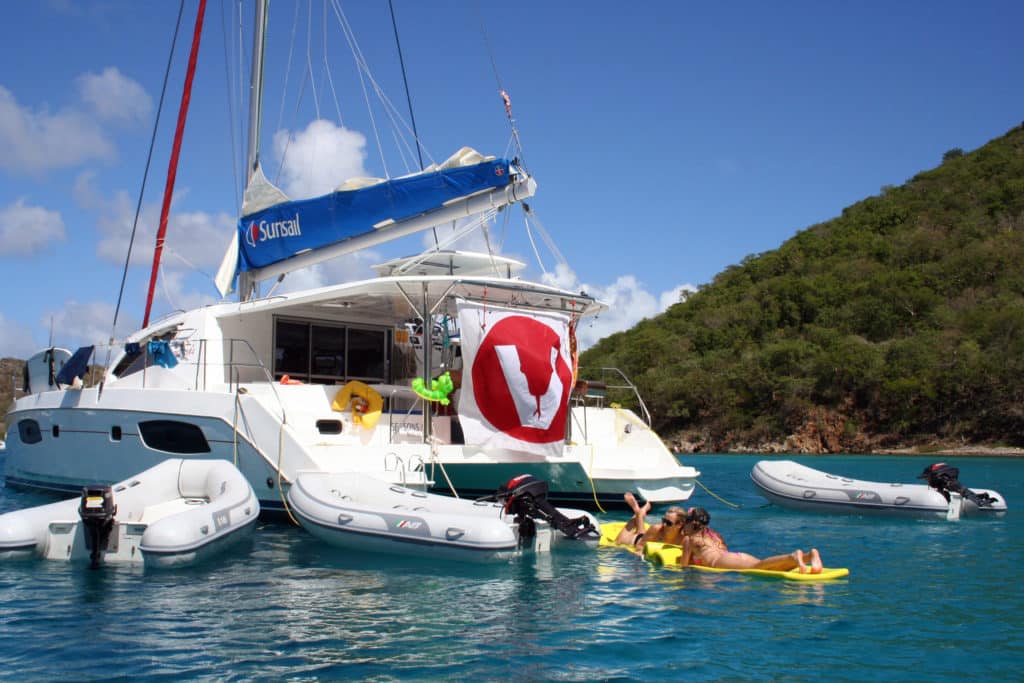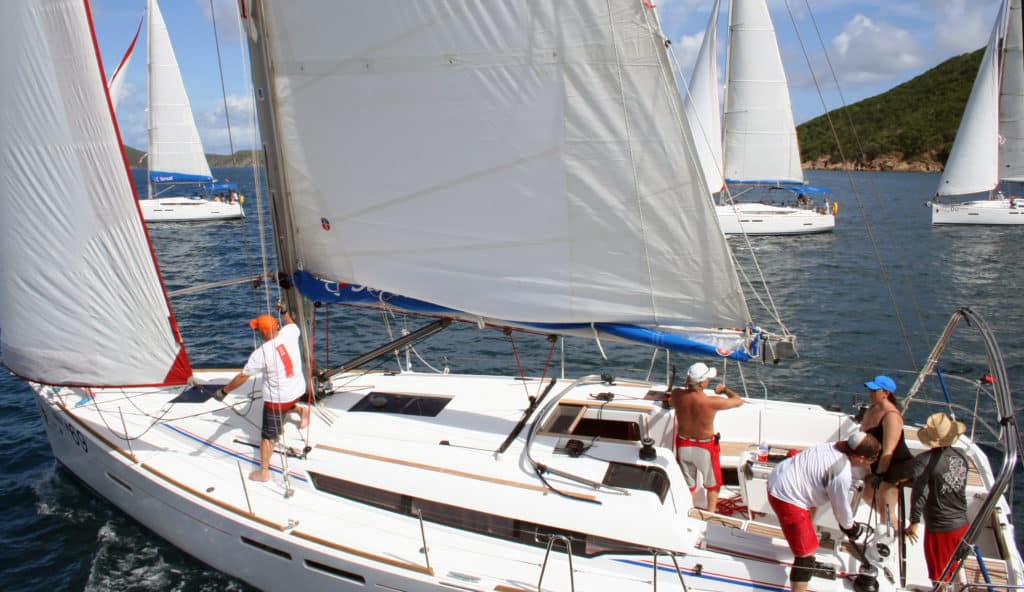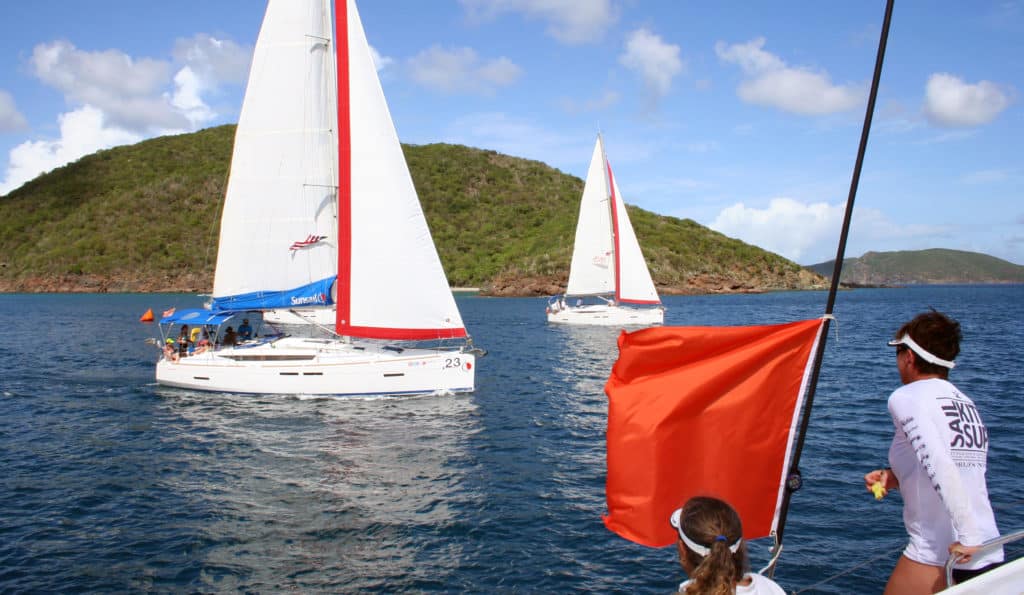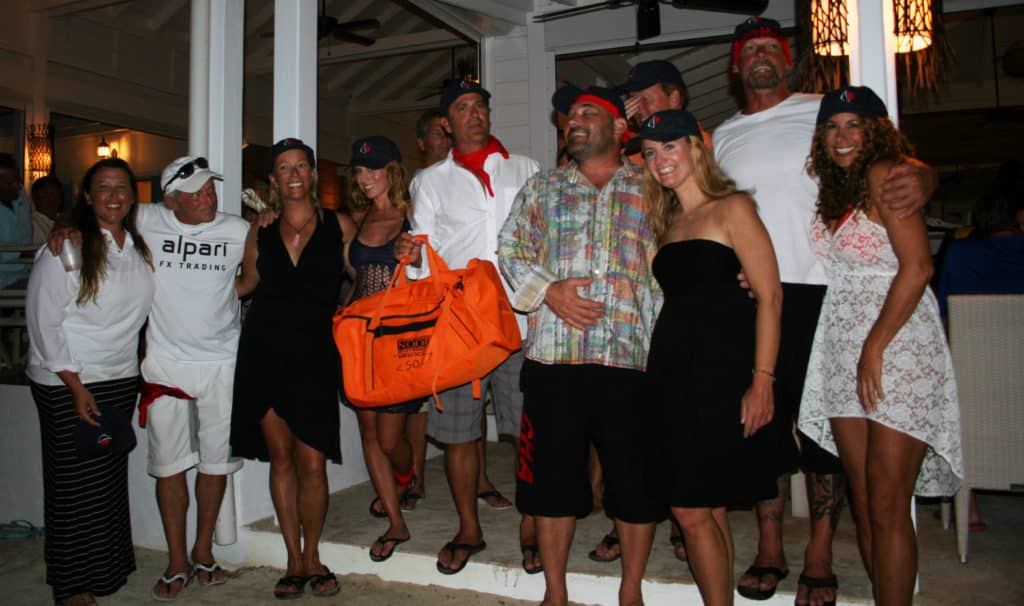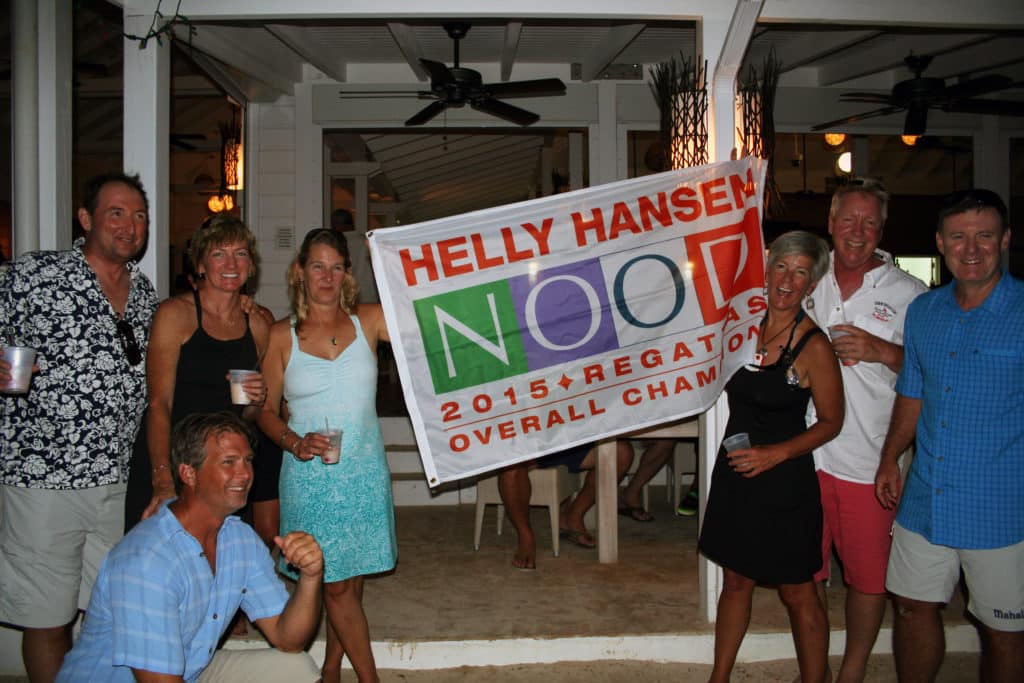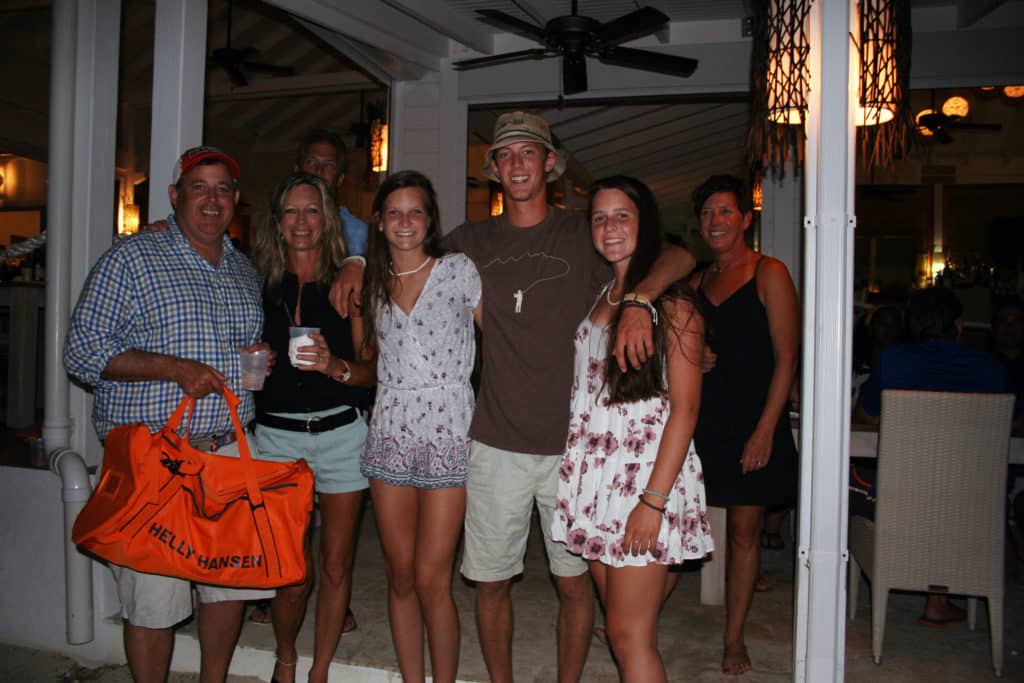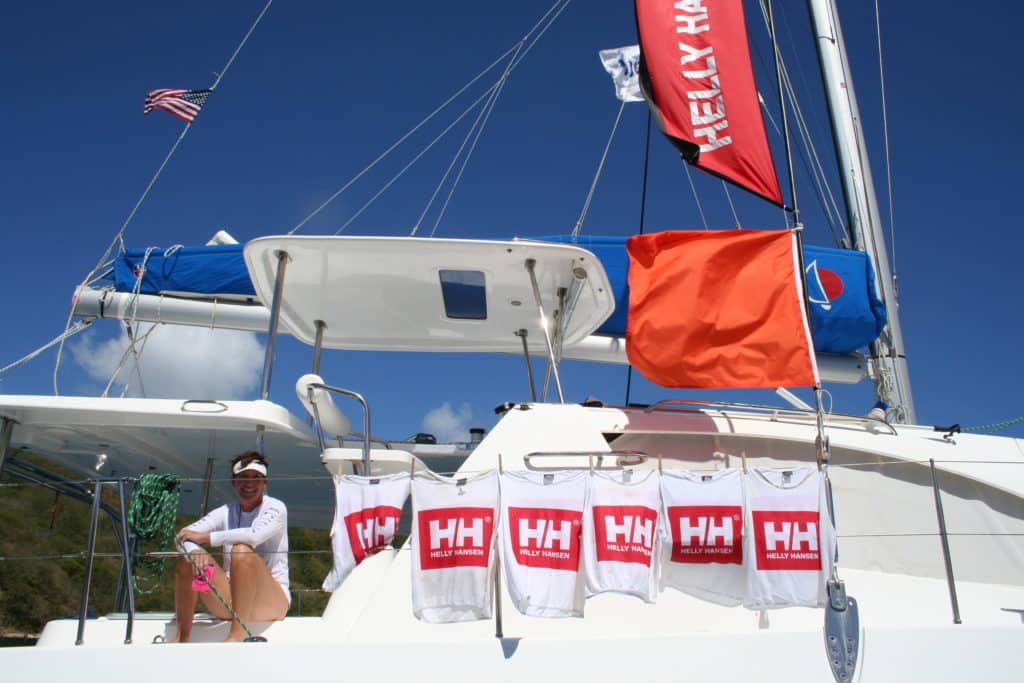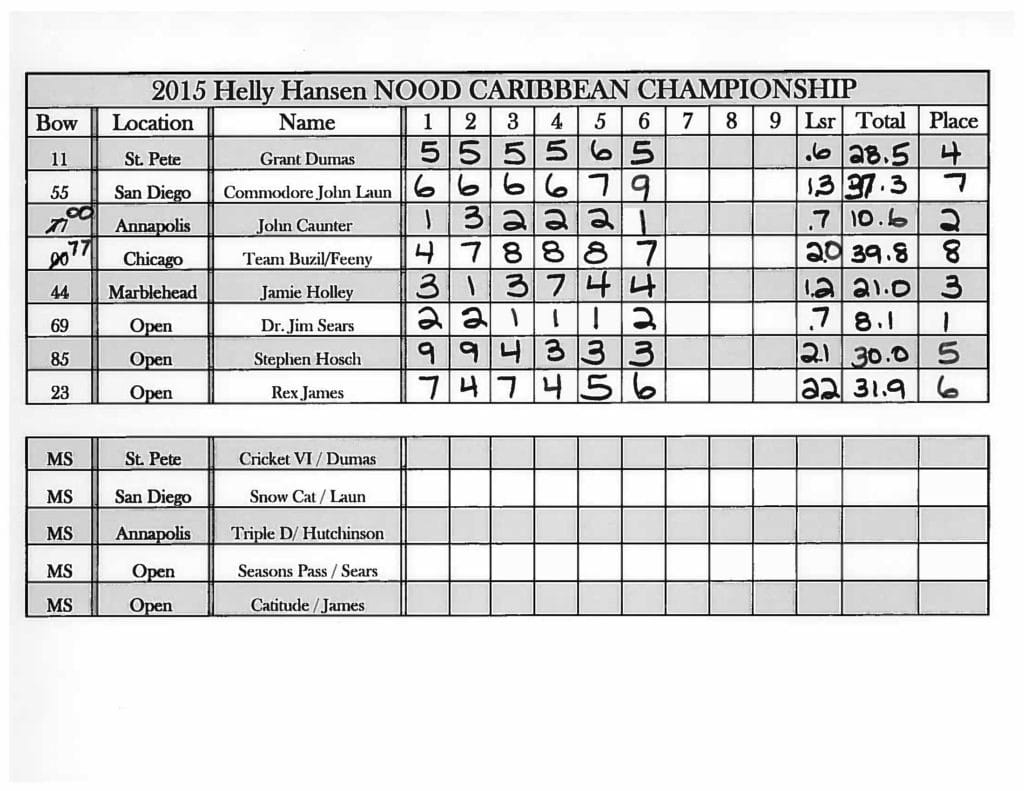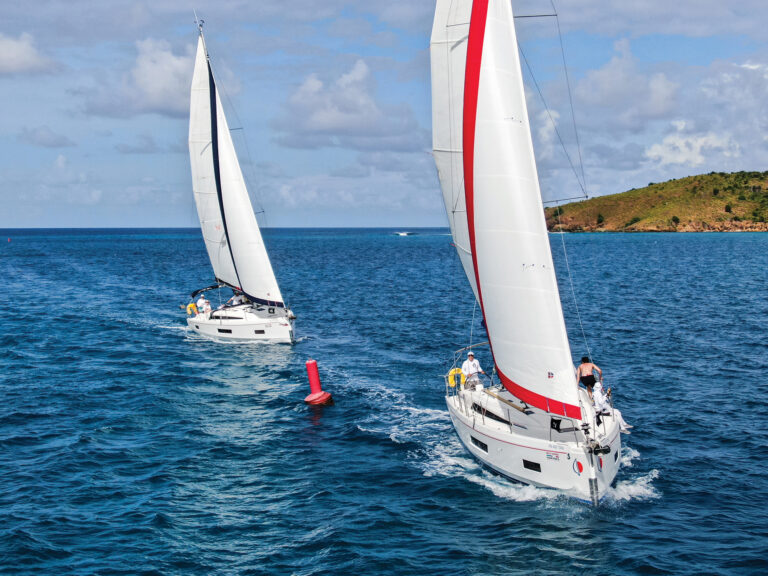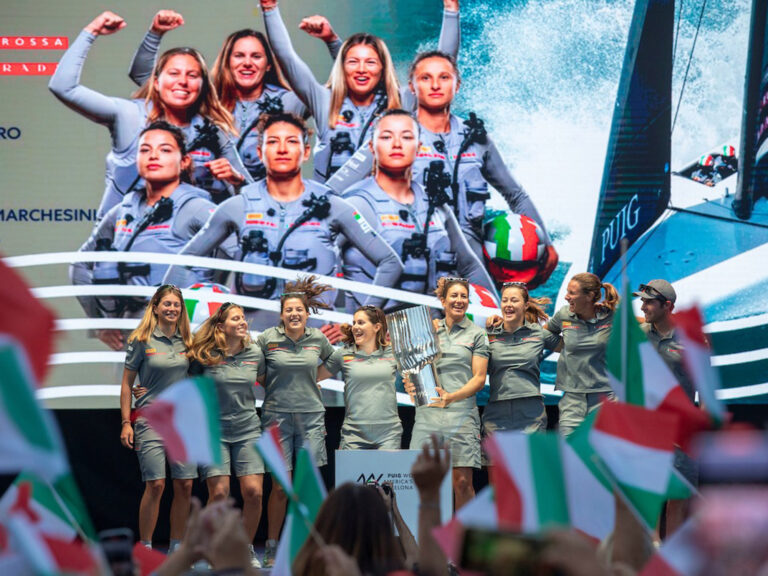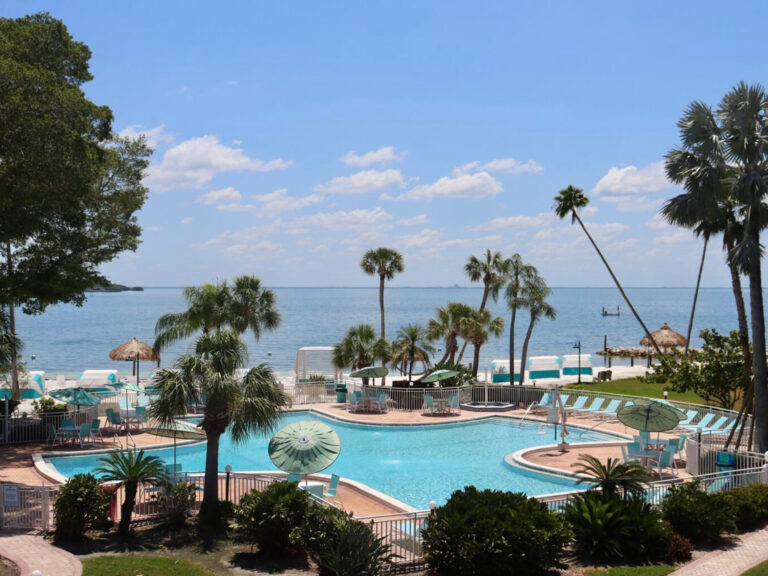Whenever Dr. Jim Sears, the two-time Helly Hansen Caribbean NOOD defending champion and Viper 640 sailor from Long Beach, Calif., placed his straw beachcomber hat upon his head before a race his alter ego appeared. Whether it was Dr. J., Jimbo, or someone else at the helm, I’m not exactly sure, but whoever it was, there was an instant transformation from laid-back So Cal dude to one heck of a fiercely competitive sailor.
The moment the starting whistle split the air, the pediatrician and television doctor was in his element behind the stainless wheels of the white Sunsail 41. His “real” boat has a tiller and weighs many thousand pounds less, but the guy knows how to make a bareboat go. He drives with hands at 10 and 2, his stance is wide and his co-ed pick-up crew is practiced and cat like across the deck.
Sears’ Team Viper, having earned its entre to the Caribbean NOOD Championship by winning the Viper 640 class and the overall San Diego NOOD in 2013, has always gone for the gusto. For his first NOOD championship, Sears chartered a catamaran to shadow the team around the racecourse, loaded it with booze, buddies, wives and girlfriends. He won the party hands down, but finished second overall.
But Team Viper avenged its loss in 2014, this time as a full-freight “Open” competitor, racing against the select NOOD champions. Again, The Viper mothership rocked the BVI’s sleepy anchorages, lit up with flashing LED disco lights and laughter. A victory in ’14 earned them an automatic defender’s berth this year (courtesy of Sunsail), and Team Viper showed up in Tortola in October ready to defend both of its titles. There were plenty of potential spoilers in the championship fleet, however, including San Diego YC’s commodore, John Laun, who earned his berth as the skipper of the top J/120 team at the San Diego NOOD. The Commodore, too, rolled into Sunsail’s Road Town base with an entourage and a mother ship stocked with crew and friends.
From the St. Petersburg NOOD came skipper Grant Dumas (pronounced Doo-mah). The software specialist trounced the St. Pete PHRF fleet in February with his Tripp 38 Warrior. His crew pool was fairly deep so he too enlisted a mother ship from which he could rotate fresh crew and willing volunteers. There are worse benches to sit than that of a charter cat trampoline, rum-drenched beverage in hand.
Representing the Chicago NOOD was a co-ed foursome led by Colleen Feeny. Her skipper, Ron Buzil, couldn’t attend so he put her in charge of carrying the Vayu battle flag. Team Chicago came lean and light on crew, confident the Sunsail 41’s jib-and-main combination could be handled by eight hands. From the Marblehead NOOD’s Rhodes 19 fleet was Jamie Holley, who pulled his teenaged son and daughters from school so they didn’t miss out. While the adults cracked beers and rum handles, Mr. and Mrs. Holley ensured the kids cracked the books.
Finally, and certainly not least, there was Terry Hutchinson, a Rolex Yachtsman of the Year and winner of the Annapolis NOOD’s J/70 fleet. He was the most likely challenger to Sears’ defense, but upon strict doctors orders, Hutchinson was on R&R following an operation two week before the regatta. One not to miss out on the fun, he shadowed the fleet on a Sunsail catamaran with his family and handed the raceboat’s keys to friends of a friend; three couples from Massachusetts and Washington that committed to the event mere days before the first race. Their leader was John Caunter, a veteran bowman, and clearly a guy who seizes the opportunity.
Bringing the fleet to eight were two mysterious entries: Stephen Hosch, who checked in from Omaha with a team of active and retired servicemen, including his son, a wounded warrior. The friends-and-family entry spearheaded by Rex James, of Sarasota, Florida, completed the fleet of eight.
The Caribbean championship’s racecourse and itinerary was the same as years past: commencing with one day of buoy racing on Sir Frances Drake Channel, followed by three distance races between islands over four days, and one dinghy series conducted at a two-day stopover at the Bitter End Yacht Club. Previous editions were contested with the Sunsail 44i, but Sunsail stepped up to provide competitors with the one-design Sunsail 41, the newer, faster design of its robust BVI charter fleet.
For downwind racing, the critical piece of equipment on a bareboat is a “pole.” Bareboats carry no spinnakers, however, so the only means to a whisker pole is using the boat’s aluminum boat hook. Remember, this was Sears’ third go at the championship, and he was savvy enough to import his trusty custom carbon whisker pole. He packed a two-part carbon windsurfing mast into a Viper mainsail bag and checked it with his luggage, but the last he saw of it was on the tarmac at Puerto Rico’s San Juan International Airport, sitting alongside a few surfboard bags.
It never connected.
But the regatta rules allow—and encourage—dumpster diving and sourcing local materials to craft a makeshift pole, so Sears and Co., went right to work, scouting for a replacement while transferring from the airport to Sunsail’s base.
“We kept an eye out for anything,” says Sears, “and we finally saw a few shops that had long tubes. We went back and talked a guy into selling us a 21-foot piece of 2-inch tubing.”
The contraption required some welding, overseen by Sears’ crew Bob Hill, an off-road truck mechanic, and some ingenuity to design and build a mast attachment to accept the pole.
“When we first set it and saw that the boats had smaller jibs than last year we were concerned it would be too long,” says Sears, “but it turned out to be a nice length to have for broad reaching where we could really project the clew.”
But the thing was unwieldy, requiring at least four people to jibe it. The choreography of maneuvering it around the foredeck had all the makings of a major cock-up. Sears later confessed that, had anyone engaged them in a jibing duel, the outcome would’ve been disastrous.
There were other key improvements that future teams might head as well. While Team Viper’s boat bottom itself was relatively clean, the keel came its own ecosystem, which required extensive underwater barnacle excavation. Also, the Sunsail 41 is rigged for shorthanded cruising, with both the mainsheets and jib sheets led to winches at the helm. Such a setup makes short tacking the boat an ordeal so Sears re-led the split mainsheet to cabin-top winches, allowing his main trimmer to grind from the companionway. Others eventually caught on and did the same.
After two buoy races on the first day, the score sheet had a three-way tie between Sears, Team Annapolis, and Team Marblehead. They’d be seeing a lot of each other over the next few days.
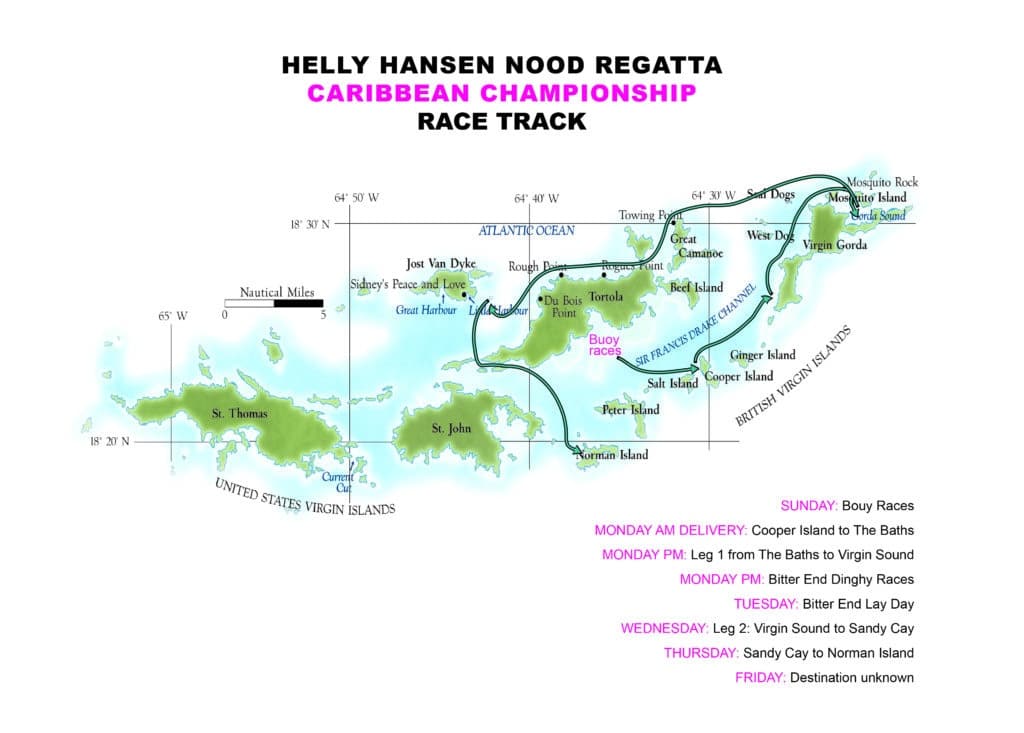
The first of three long-distance races set off from the iconic boulder fields of The Baths on the second day, and emerging from the scrum start were Team Viper at the boat end and Team Annapolis with a clean running start at the pin. The boat end was far more risky, says Sears, with the potential of being shut out, but they timed it to perfection. Team Annapolis, with open runway, however, was able to get the puffs rolling down from the high hillsides sooner and sailed into the lead, albeit temporarily. Twenty minutes or so later, the two converged at the first headland, overlapped. “I sailed into a hole and they came in with momentum and rolled us,” says Sears. “I tried to luff them, but these boats don’t accelerate and they went right over the top.”
With a bit of luck and better boatspeed, says Sears, Team Viper eventually slipped into a covering position to finish first in Gorda Sound. Annapolis and Marblehead were in lock step behind, leaving only one point between the top two teams.
As per tradition, racing immediately carried over to the Bitter End YC’s fleet of beach toys, and in the spirit of the America’s Cup the NOOD race committee switched the series from Lasers to Hobie Waves. While there was no foiling hull flying in these drifter races, there was plenty of entertainment for the spectators and hecklers, especially watching oversized adults attempt to get their weight forward with yoga-like toe-to-the-tiller techniques. Here, in the little boats, young Elias Hutchinson schooled the fleet with three bullets before a shocker final race, handing the dinghy race title to towering Grant Dumas, who seemed twice too big for the Wave.
Following a lay day and an informal mash-up with the Bitter End YC’s Pro-Am Regatta participants at The Pub, the teams set off early on Leg 2, the long two-part downwinder to Jost Van Dyke (with a lunch and swim stop at Guano Island’s Monkey Point). That’s nearly 20 miles of painstaking wing-on-wing trimming.
Team Viper recovered from a terrible to start to hit the right corner inside Gorda Sound and the recovery move played perfectly into their hands as they followed Team Annapolis out of the Sound.
With the distinct advantage of a whisker pole that was half the length of the boat, Team Viper slithered its way into the lead and was first to Monkey Point, again with Team Annapolis giving chase and keeping the spread to only 2 points. A downwind start is always a comical challenging with jib and main, only because momentum will either do you or save you. As it was, Team Viper’s Leg 2 restart almost went pear shaped.
“The better move was to start at the committee boat end and jibe out,” says Sears, “but because of how the boats set up I had to lead the pack across and started at the pin, and I was pinned by all the other boats. I saw Annapolis jibe around the boat right away and thought, ‘Oh great, they’ve got this one.”
Luck continued to befall the Viper squad, however, as the wind was initially better offshore. Sears built enough of a lead to get in front of Annapolis, but the two would almost converge again off Tortola’s Rough Point.
Stephen Hosch’s team from Omaha, which had spent the better half of its Bitter End YC layover scraping the barnacles off their keel using the boat’s spatula and building its own pole from lumber and steel pipes, was firmly in the mix, stirring things up and almost allowing Team Annapolis to get away with a leg win.
“There was quite a bit of shadow under the cliffs,” says Sears, “so there was lot of jibing in and out. Annapolis sort of skirted around it all and we were stuck with boat 85 [Hosch].” Sears found an opportunity to break away from Hosch’s squad in order to cover Annapolis, only to look back moments later to see Hosch completely becalmed. “I was glad that didn’t happen to us,” says Sears, “we were able to work down on their line [Annapolis] just to cover, but they were gaining on us the whole time.”
With the championship now mathematically within grasp of only the top two boats, the race committee started the fleet in the lee of the postcard popular Sandy Cay with what should have been a straightforward port-tack start for the entire fleet.
Naturally, all but one team crossed the line on starboard and the pack raced straight into the nearby shallow anchorage. Sears didn’t have the perfect start—but Annapolis did again—and on its first tack, says Sears, they had an override on the jib sheet, requiring them to run a new sheet and abandon their strategy of short-tacking the Sandy Cay’s shoreline. “When we finally could tack I wasn’t laying the point, but we got a huge lift around it and just hugged a bit closer to the island than they [Annapolis] did,” says Sears.
Team Viper led into the current flush of Great Thatch Cut near Sopers Hole, and while another leg win seemed a loose-cover sure-thing, Team Annapolis reeled them in and sailed right around them. Sears’ secret strategy had backfired. “I had my wife lounging on the back of the boat in her bikini in an effort to throw off the other team’s concentration,” he later confessed. “Instead, they viewed her more like a carrot.”
True story, says Team Annapolis’ John Caunter. “Jim had his wife sitting on the rail in the back corner of the boat, in her bikini, so that was our target. Betsy [White] was driving and we’d guide her by saying, “Ok…now aim for the left butt cheek…”
Whatever the technique, it was working and caused severe anxiety for Sears, who watched Hosch creeping into the picture as well. “We started trying to figure out how not to lose the two boats and I started to get that feeling we were about to lose the whole thing,” says Sears. “We were making adjustments and nothing was making a difference. They just got into better current.”
Team Annapolis was first into The Bight at Norman Island, scoring its first leg win, but second was good enough for Sears and Team Viper to lock up its defense. Naturally, Sears credits his crew for their efforts, both day and night, including his Viper crew and jib trimmer Rachel Ellis, part-timer Dan Falzetti who captained the mothership, Bob Hill, aka “Tattoo Bob,” who procured the team’s whisker pole and fixed anything that broke, Rochelle VanTil, who commanded the bow, main trimmer Larry Walter who was also responsible for “Bloody-Good Larrys” every morning and grinder Scott Davis, who sported a new costume each day. Indeed, it takes a team to conquer the NOOD Caribbean Championship, but not just any team.
As the top NOOD champion, Team Annapolis secured the 2015 Helly Hansen NOOD Regatta Overall Winner title, and as the Caribbean NOOD Champion, Team Viper earned another invitation to defend in 2016. Sears says he intends to do so and all are welcome to attempt to dethrone him. It’s first come, first served, and that’s not just at the bar.
